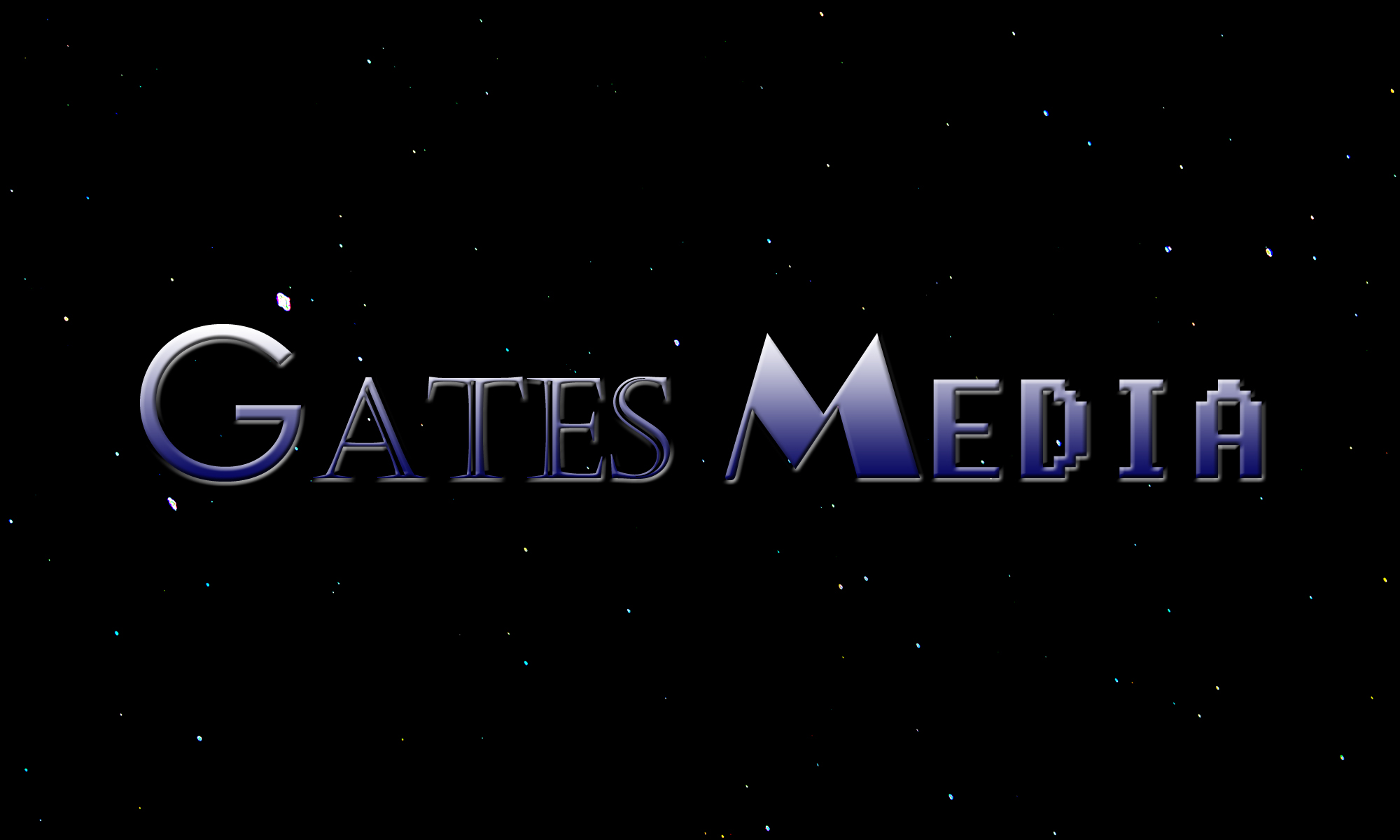Netflix informed me of this. Go watch it! And prepare yourself for space thongs, a protagonist whose goal is whatever anyone tells him, and cool-looking nonsense!
Speech Therapy: How General Hein Destroyed Square Pictures
Transcript:
Brad Bird once said that while he was directing The Incredibles, everyone told him that it wouldn’t succeed because it focused on human characters. Final Fantasy: The Spirits Within, the first fully computer-generated, feature-length film to attempt photorealistic 3D animation, had just lost $94 million and was blamed for the closing of its production studio Square Pictures. People didn’t seem interested in seeing the not-quite-human-looking characters CG could produce. Of course, Bird ignored these concerns, knowing that the species of the characters had nothing to do with the quality of their story or the success of a film. Final Fantasy was no exception.
Spirits Within tells the story of Aki Ross, a scientist in the post-apocalyptic near future. Phantoms, an alien species of energy beings invisible to the naked eye, have invaded Earth, killing every living thing they touch. Dr. Ross and her mentor Dr. Sid hope to stop them by creating an energy wave with just the right form and frequency to cancel out the aliens. They also hope to cure Aki, who has been infected with a particle of alien matter, a condition that is usually fatal. For the moment, a chest plate designed by Dr. Sid is keeping her alive by containing the alien infestation safely inside her.
Dr. Sid is a famous scientist known for discovering that humans and other living things contain within them the same energy that phantoms are made of. He’s also found a way to harness this energy for weapons, shields, and technologies used to combat the phantoms. His discoveries aren’t without controversy though. He refers to the energies in living things and phantoms as spirits, and while he has no evidence to support it, he believes the Earth has a spirit, too.
General Hein, the leader of the United States Military Force and the antagonist of Spirits Within, seeks to prevent Aki and Sid’s research. He believes that humanity’s best hope of destroying the phantoms is to fire a newly developed weapon known as the Zeus Cannon at their nest, the Leonid meteor the aliens arrived on. Despite Dr. Sid’s evidence that firing the cannon at the meteor’s crater will be ineffective against the phantoms, Hein won’t be convinced otherwise. He suspects that Aki has carried the alien within her for so long that it’s now influencing her actions. She should be in jail, not pursuing research that could be just what the enemy wants.
On the surface, nothing seems wrong with Spirits Within’s story, which may be why filmmakers, fans, and critics have offered so many alternative explanations for the film’s failure. Some say it was wrongly marketed to Final Fantasy and action movie fans. Others say it was over budget. The story, with its mix of spirituality and science, was contrived and confusing for Western audiences. The poorly written dialog was delivered through stereotypical characters voiced by lackluster actors. It was an original, science-fiction movie for a mature audience in a market traditionally associated with children’s entertainment. The film emphasized the technology used to create it, which distracted from the story and rendered it “as exciting as a shampoo commercial” featuring the protagonist’s hair.
Like the theory presented to Brad Bird, these reasons didn’t explain to me why The Spirits Within failed to capture anyone’s attention beyond its stunning visuals. Some of these “problems” were the reasons that I found the film so intriguing. Other films that contained many of these same flaws were financially successful, Avatar being a prime example. Within days of watching Spirits Within, I would forget what it was about, but it wasn’t because the story it set out to tell was dull or dumb. The film’s foremost problem is its major source of conflict: General Douglas Hein.
Conflicts are the obstacles that the characters face in the pursuit of their goals. A conflict could be as big as the protagonist having to defy her government to save the world or as simple as the hero’s side kick having a grating personality. Conflict is used to get the audience engaged in the story, but more importantly, it helps develop the world and its characters. Often the world’s physical rules and political laws are defined to stand in the protagonist’s way. Conflict also shows how the characters react to stress and how they interact with other people.
There are three problems with the conflicts General Hein creates. First, they’re hardly ever used to develop the world or the characters. For example, in his attempt to convince the United Nations Security Council to fire the Zeus Cannon, he asks, “Can we afford to wait for some crazy invention… that offers no solid evidence that it will destroy the aliens?” Much of the movie takes place in a shielded city where no one seems to be in immediate danger. The answer would seem to be, “Yes, we can wait for a technology that will probably work better than shooting a giant laser at a hole in the ground.” Getting rid of the phantoms would be great, but why the rush? Is there an energy or resource crisis? Are there less privileged cities that aren’t shielded where people die frequently? Are there flaws in the shielding? Are there parts of the world that aren’t wasteland yet? General Hein never elaborates, and no one agrees with him, missing the opportunity to add some depth to the world.
As another example, General Hein sends Captain Gray Edwards and his three-member squad to follow Aki and arrest her if she shows any suspicious behavior. Judging by the experiences of Edwards and his crew, I’d think that at least some of them would follow these orders. Hein doesn’t know that Gray is in love with Aki, but Gray must be a loyal soldier if he’s been entrusted with such an important mission to General Hein’s cause. Besides their knowledge of Gray’s feelings, none of his squad members have a reason to sympathize with Aki. She nearly got all of them killed in the first ten minutes of the movie, and all of them think Aki and Sid’s spirit theory is crazy. Rather than developing complex and interesting relationships with Aki and Hein, Edwards and his squad support Aki’s cause without question and show absolutely no loyalty to General Hein. They must think Hein is crazier than Sid and Aki and rightfully so.
This leads to the second problem in the conflicts General Hein produces: they are ridiculous. Hein wants the phantoms destroyed and has nothing to lose by allowing Aki and Dr. Sid to try, but he jails Aki and her companions and plots against them for no reason. He finds evidence that Aki is under the phantom’s influence, but instead of presenting it to the Council, he carries out a different plan to force them to fire the Zeus Cannon, one where he accidently destroys the city. He ends up destroying the cannon and killing himself in a spectacular display of stupidity. This may as well be a movie about the silly shenanigans of a delusional man and how his actions affect innocent bystanders.
The Council’s decision to allow Aki and Sid to pursue their research is rational, so why is this same council letting such an irrational man retain the position of a military general? It’s suggested that Hein’s hatred for the phantoms, ignited by the death of his wife and child, has blinded him, but that’s not an excuse to let him be a general. No one else thinks so either. Edwards and his squad obviously don’t take him seriously, the Council trusts Dr. Sid’s crazy theory about the Earth having a spirit more than General Hein’s evidence that the Zeus Cannon will kill phantoms, and even the major closest to him questions what he’s doing.
Finally, by entertaining Hein’s existence, the conflicts and questions that actually exist without a mentally unstable character creating them aren’t explored. For example, in one scene of the movie, Aki appears to attract the phantoms. General Hein sees it as evidence that Aki is working for the aliens, but otherwise, no one questions if they should be around Aki, let alone wonders why it happened. The audience is left guessing… or, worse, assuming that it’s only purpose was to motivate General Hein.
Dozens more questions exist that aren’t answered because the movie is too busy explaining General Hein’s convoluted actions. Why would such reasonable Council members want to jail Sid or Aki for believing that the Earth has a spirit or for using the term “spirit”? Why would a scientist that has invented everything that has allowed humans to survive think that he would be jailed in the first place? Why does Edwards and his squad want to associate with people who believe in spirits? Why not fire the Zeus Cannon and allow Aki and Dr. Sid to continue their research?
Aki’s journey to cure herself in order to cure the world had potential to be compelling until a clichéd antagonist was introduced as the main source of conflict. We spend so much time in Hein’s delusional mind that we don’t learn about the world that everyone actually lives in, and none of the conflicts General Hein produces motivates any of the other characters to develop more complex personalities. Final Fantasy didn’t fail because it had humans with 60,000 strands of hair. It didn’t fail because it told an original science fiction story or even because it had poorly written dialog. What Final Fantasy was missing was a relevant conflict that created a story with relatable characters and an understandable world.
Brad Bird and the creators of The Incredibles recognized that not all Spirits Within’s choices were the cause of its demise. The Incredibles would be a success and so would Beowulf, Avatar, and Final Fantasy VII: Advent Children. These films, among others, showed that feature length CG films could preach about protecting the planet, have photorealistic art styles, target mature audiences, feature human characters, and still be financially successful. The elements that made Spirits Within different and interesting didn’t destroy Square Pictures. General Hein did.
I found Starship Troopers: Invasion
Time to get excited about finding another rare film that I just kind of complained about… It’s an R-rated, feature-length CG movie based on an existing franchise, featuring guns, the military, and probably senseless sex and violence. It’s animated by the same studio that made Appleseed: Alpha though, so it looks nice… and it’s on Netflix. Aw, yeah!
A passionate speech to DreamWorks Animation that no one asked for
DreamWorks Animation is apparently in financial trouble partly because of the highly competitive animated-film market. Well, you know what, DreamWorks? Other people exist on this planet other than than young children and their parents. No one said you had to target them. There’s an entire market of teenagers and young adults that you and near every other animation studio have ignored for the past twenty years. Return to your roots! The first CGI film you ever made was Antz, a film that in retrospect should not have even tried to target children at all, a strangely philosophical and gritty film full of death, political satire, and dark comedy. Absolutely no one is making films like that regularly using CGI. There’s no competition! You could show what else CGI could be for, what it could do, what it could show when it doesn’t have to first and foremost entertain children.
I don’t need a photorealistic recreation of golden Angelina Jolie. I don’t need 60,000 strands of hair. Just because I’m over 12 years old doesn’t mean that the only way 3D animation will entertain me is if it features guns, stupid headstrong women, zombies, the police, a military, or a creepy, muscular man cutting his own arm off. I want to know what the space race in a binary planet system or on several inhabited moons, orbiting a gas giant is like. I want to see an unlikely hero, who looks very different from us but acts much the same, liberate his enslaved and ignorant species from an oppressive corporation. I want to see how a person’s acceptance of their differences and strengths that derive from them can save themselves and the people close to them. I miss the story about that ant who was disgusted with the oppressive world he lived in and succeeded in changing it.
There’s millions of teenagers and young adults out there playing video games composed of 3D graphics and dark stories or watching anime about psychopaths, depression, equivalency and fairness, the existence of god, notebooks that can kill people, pornography, and a multitude of other adult and challenging topics. CGI can tell stories as complex and dark as those found in video games and anime, too! DreamWorks Animation, step forth and embrace a brave new target audience! Nobody asked you for Shrek the Third or Penguins of Madagascar! I’m asking you for Antz! Millions of people don’t know it yet, but it’s what they want, too!
…Yup. That’s the story of what I do at 3:30 in the morning: write a passionate speech about stuff that will probably never happen. And I’ve been watching Antz… a lot.
Speech Therapy: Magic is Everything
Transcript:
I recently heard that magic is madness. According to one of the supporters of this literary theory, Freedomain Radio host Stefan Molyneux, the manifestation of magic whether it be in fiction or in reality exists only in the mind. Because “magic” in reality is described by mentally unstable people, “Magic in stories is always and forever a metaphor for madness.” Magic in fiction is the delusion of some character and “visible” to us because we are told the story from her perspective, but we, like other non-magical characters that may appear in the story, can distinguish it for what it is, insanity. The character is deluding herself into thinking that magic is occurring when in reality, she is screaming verbal abuse, babbling to herself, or performing some other destructive or crazy behavior as a result of trauma or boredom.
Stefan’s review of Frozen is what introduced me to this theory. Interpreted using the “magic is madness” theory, Frozen tells the story of Elsa, who out of boredom developed the insane belief that she could do ice magic. One day, in a fit of madness, Elsa hurts her sister Anna. Her parents hide her away and tell her to hide her insanity. Then, she kills them. Years later, Elsa finally gives in to her madness, screaming about ice magic and running into the mountains with her entire kingdom as witness. Because she is the queen and the town is hopelessly in love with her, they also believe in her ice magic powers and so must retrieve her before life can go on.
This theory is thought provoking and points out problems and ideas that I wouldn’t have seen otherwise, but the profoundness of it is overstated and even distracting. Yes, you can interpret any work of fiction that contains magic as being about insanity, but that doesn’t mean that everyone is going to or should interpret the story in that way and doesn’t necessarily mean anything at all.
There are two ways to find meaning in a story. First, we can draw upon the story’s elements and themes and our own personal experience and knowledge to piece together a theory of what the story means. Our brains are very good at finding patterns in random data and images. Matrixing is the phenomenon where we see human faces where there shouldn’t be any, in complex patterns such as wood grain or carpeting. A collection of government documents, movies, and news articles has no meaning as a whole until someone concocts a conspiracy theory with them.
The process of finding meaning in a work of fiction can be similar to finding meaning in random patterns, data, and personal experiences. When we realize this, it isn’t surprising that Stefan should find that Frozen is about exactly the things he frequently talks about on his show: female privilege, PTSD, and child abuse. Frozen takes place in a non-sense world featuring a snowman who dreams of summer, a princess who pines after a man she just met, and a city that easily accepts that their queen has horrible ice magic. “Magic is madness” is only one of thousands of ways to interpret this chaos. A person who has experienced depression or anxiety is more likely to interpret Frozen as being about Elsa’s metaphorical battle with these problems and the affects they have on those around her.
Just because a work of fiction means something in particular to someone doesn’t mean that it will mean the same thing to everyone else automatically. If I am unaware of the “magic is madness” theory or that female privilege exists, then why would I consciously or unconsciously interpret Frozen as being about these things? Okay… The first time I saw Frozen was long before I was aware of the “magic is madness” theory, but I can’t prove I wasn’t unconsciously thinking about how insane Elsa was for believing that she had magical powers, how the stereotypical Jewish trolls signified the Jews who invented psychoanalysis, or what a self-centered bitch Anna was. …What a bitch.
The second way that meaning can be found in a story is to interpret it using a theory such as magic is madness. In doing this, however, the theorist risks ignoring whatever the author intended the story to mean and the artistic choices that were consequently made while advancing his own theory or agenda. A feminist can take popular video games and argue that they are sexist. A conspiracy theorist can take popular films and argue that they are propaganda. Anyone can take a film that has magic in it and interpret it as madness.
“Now that I know Orson Scott Card is anti-gay, I’m going to interpret all of his books as if they were anti-gay propaganda!”
If you try hard enough, any work of fiction can be about anything. Stefan argues that Frozen teaches young girls that they don’t have to work hard to be skilled in something. Elsa was born magical. Anna left her castle with little knowledge of the outdoors and survived. Both of them were born into royalty.
There are no guarantees that a child, or even an adult, watching Frozen would pick up on any of this though. From a completely different perspective, Frozen is about the importance of being open about who you are and of talking to those close to you about your problems. Elsa’s magic symbolizes absolutely anything anyone would want to hide about themselves out of fear of rejection or of hurting someone. This could include being gay or transgendered; feeling depressed, anxious, angry, or suicidal for any number of reasons; or admitting a lie or wrong doing.
The filmmaker’s choices may have been to emphasize this message. For example, it isn’t important that we know whether Elsa or Anna know how to rule a kingdom because the focus of the story is Elsa opening up to her sister. From a writer’s perspective, Anna being able to perfectly throw a pickaxe, or neither of the sisters showing any interest in politics, could be seen as lazy writing, not a meaningful plot point.
The argument that all fiction that contains magic is about insanity is distracting at least in terms of Stefan’s goals. I think that the “magic is madness” theory is a valuable way to interpret fiction, but it doesn’t describe what Frozen is about to me. The most impressive interpretation I’ve heard using this theory was of Harry Potter because it was so well supported by both evidence in the books and in J. K. Rowling’s life. Stefan’s interpretation of Frozen pleads for stronger, more thoughtful writing more than anything. Because his interpretation was so distant from the surface story the film told, I wasn’t as convinced that the movie was about insanity.
Stefan’s effort to argue that all fiction in this category can be interpreted in this way distracts from what I think he’s really trying to say. If indeed we are subconsciously being affected by these works of fiction, the authors who are creating these thoughtlessly written and clichéd stories are enforcing the illogical idea that irrational thoughts and actions will somehow make the world a better place.
[“What rules over us is bad ideas. That’s it. Nothing more, nothing less. Bad, irrational, illogical, subjective objectivity…. The idea that we must learn kung fu to fight killer robots is a great way of distracting people with delusions of violence rather than getting them to think critically and oppose the bad ideas…. If you can get people to think that it’s a physical fight, then they go in unarmed to the real fight which is intellectual.”]
“Magic is madness” has its place among other theories and tools used for interpreting works of fiction. It can be valuable for finding hidden messages in a work of fiction and identifying illogical and lazy ideas both in the work and in life. What a work of fiction ultimately means, however, is unique to each individual as it is subjective and often determined by personal experiences.
Pokemon can be a story about a boy with an absent father who was kicked out of his house when he was ten and consequently went insane. Or it can be a story about the comatose hallucinations of a boy who went adventuring into the cruel world of Pokemon training, fell off a bike, and hit his head. Or it can be a simple story about a boy growing up… and selling merchandise. It and other works of fantastical fiction are all of these things and more.
Talk at you next time.
Assorted CG Movie Trivia and Quotes
Do you want an infinite loop of this random CG movie trivia? Download the slideshow here.
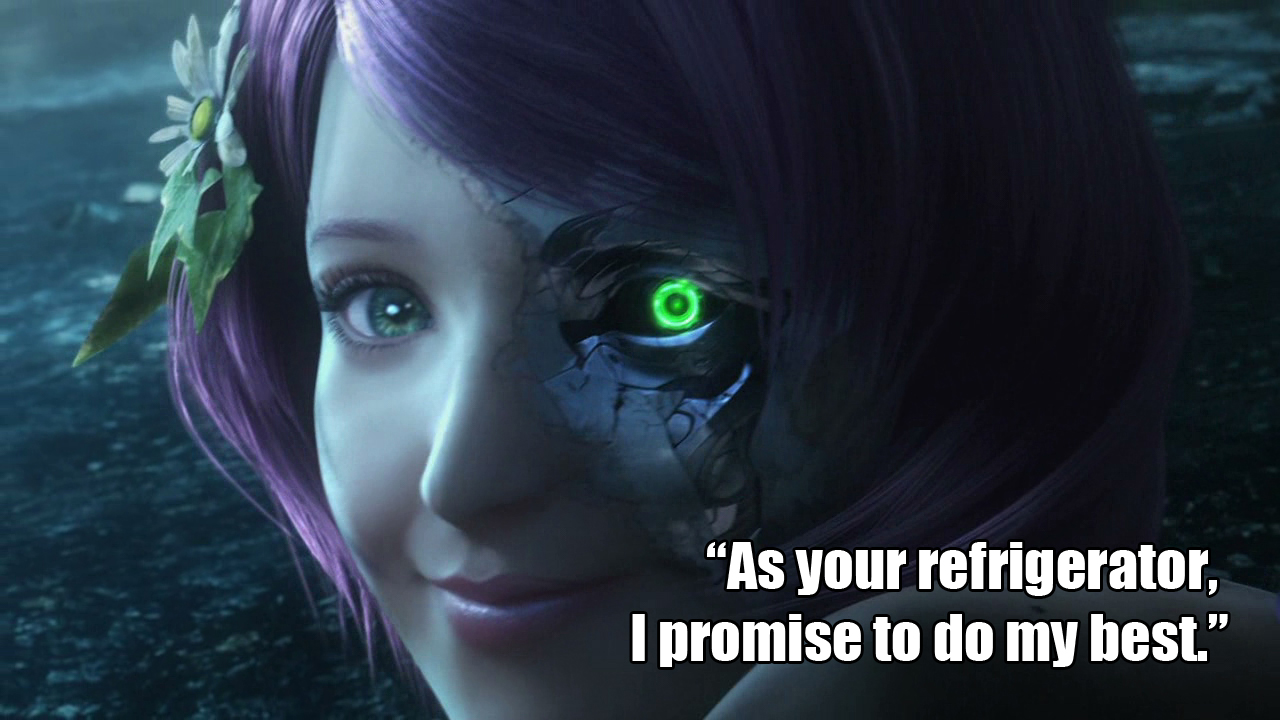

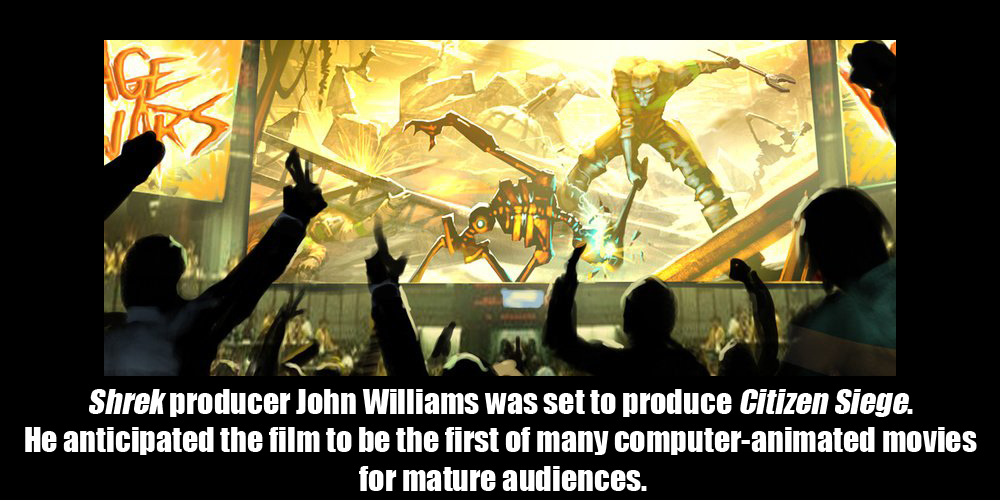
Retrieved from http://oddworldlibrary.net
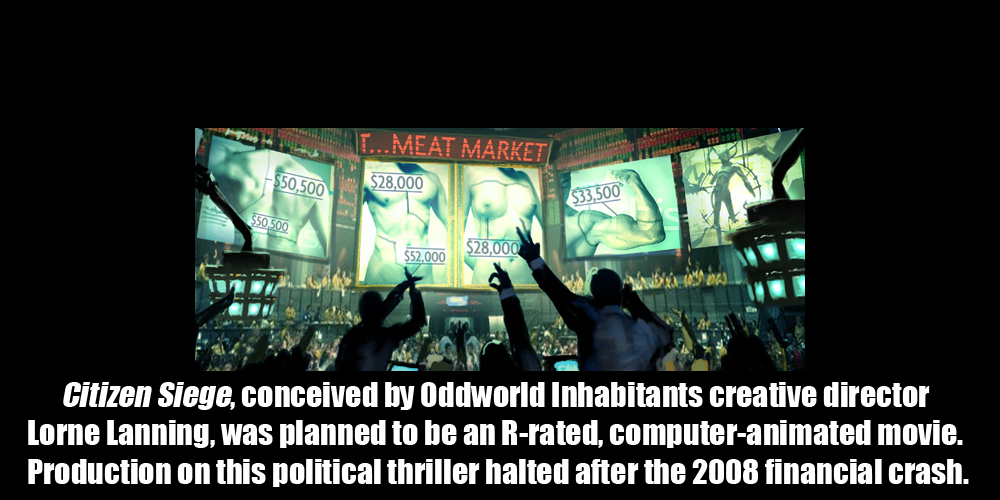
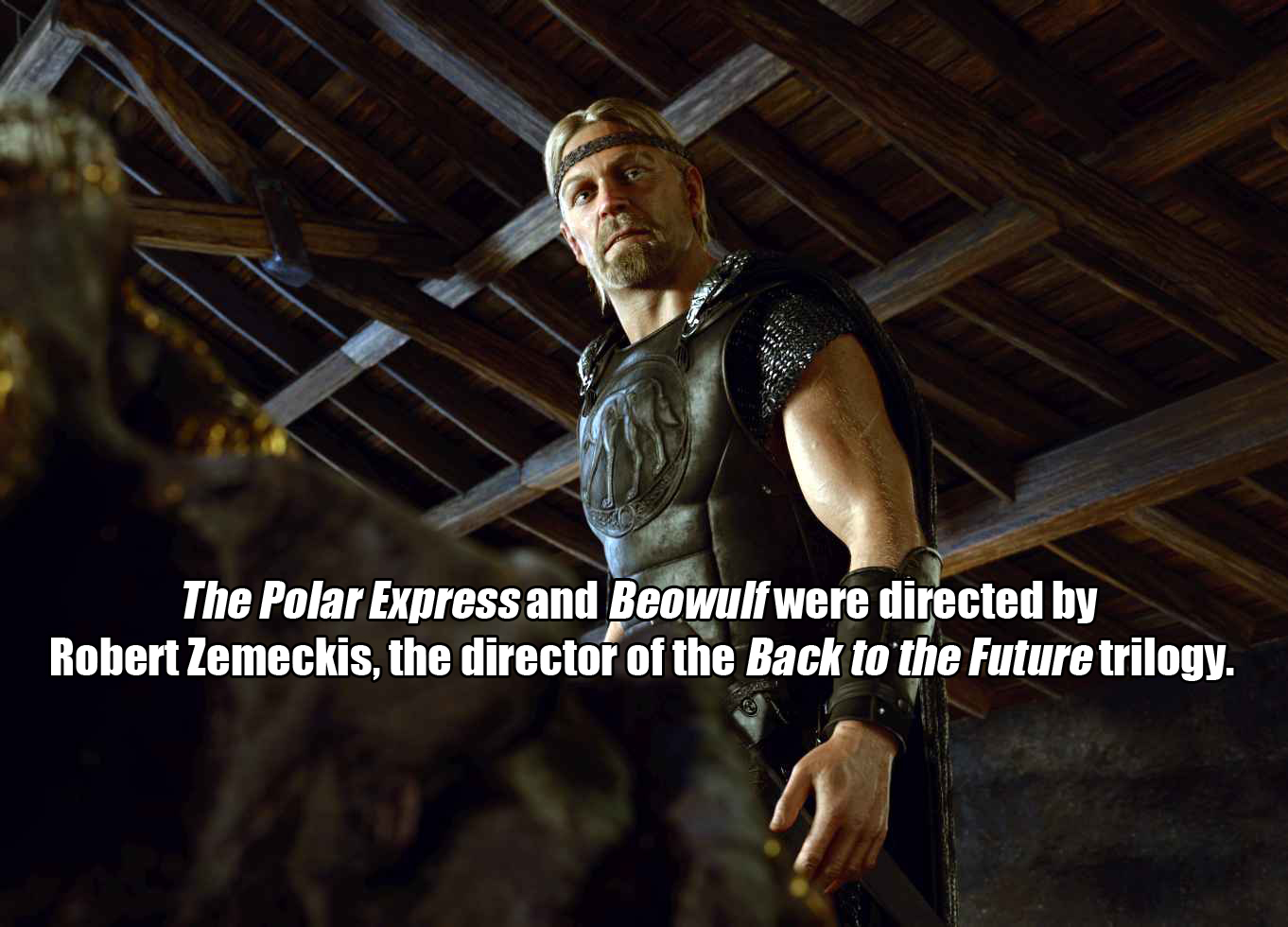
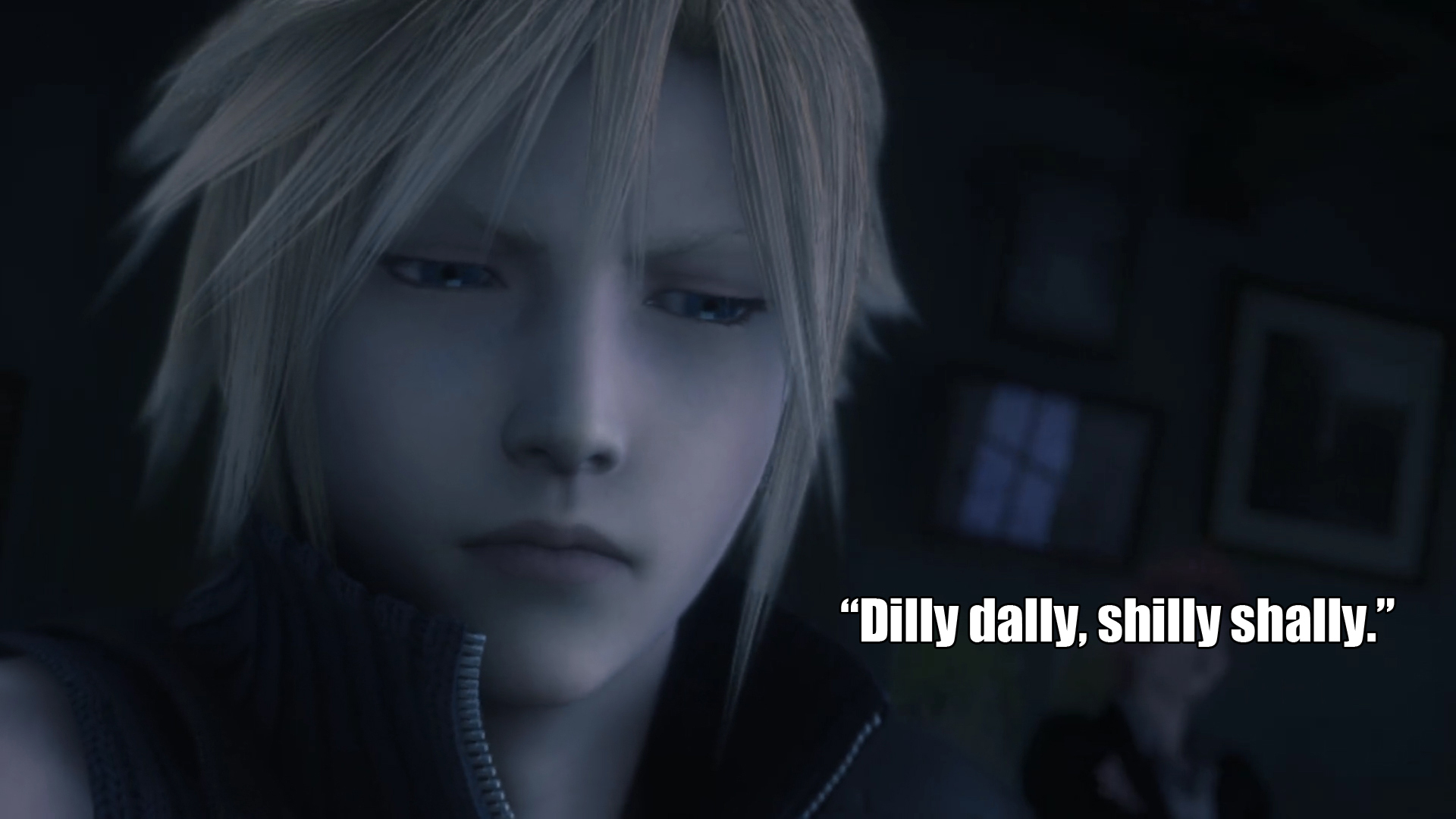


Guinness Book of World Records Website


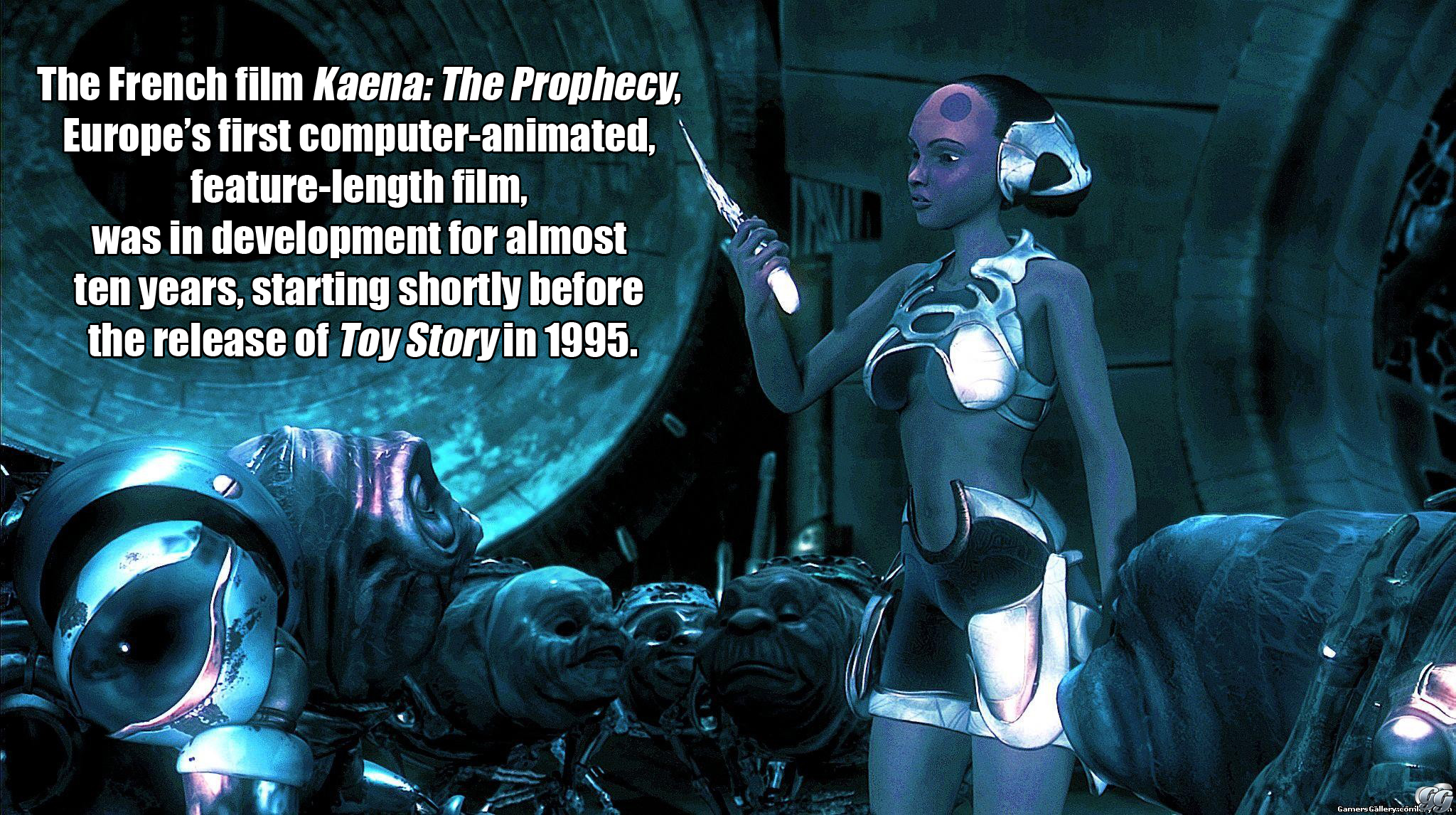
Peszko, J. P. (2004, July). Kaena: The Prophecy – First 3D CGI Feature-Length Film from Europe. Animation World Magazine, 32-35.
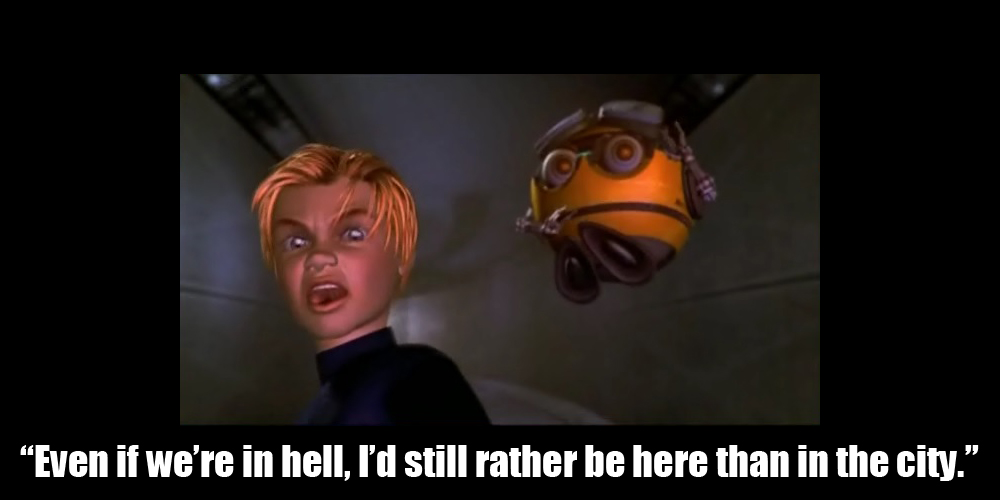
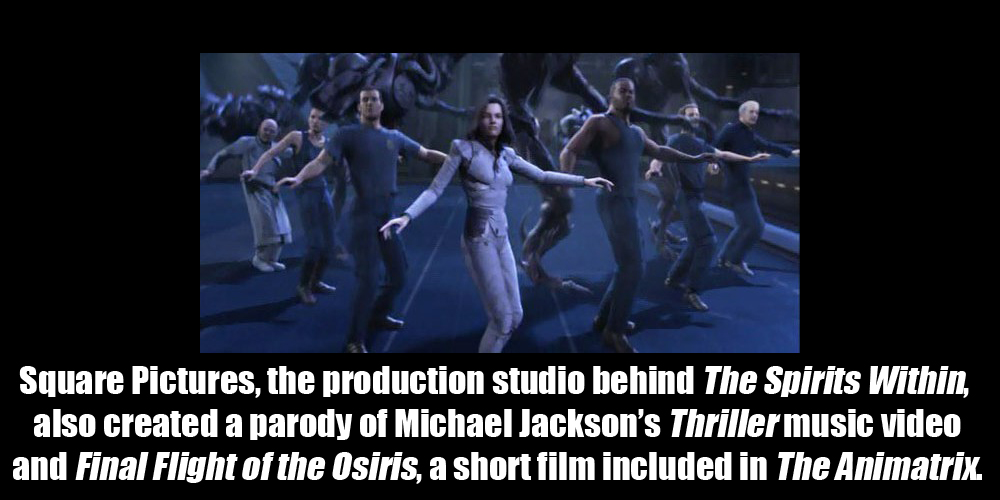
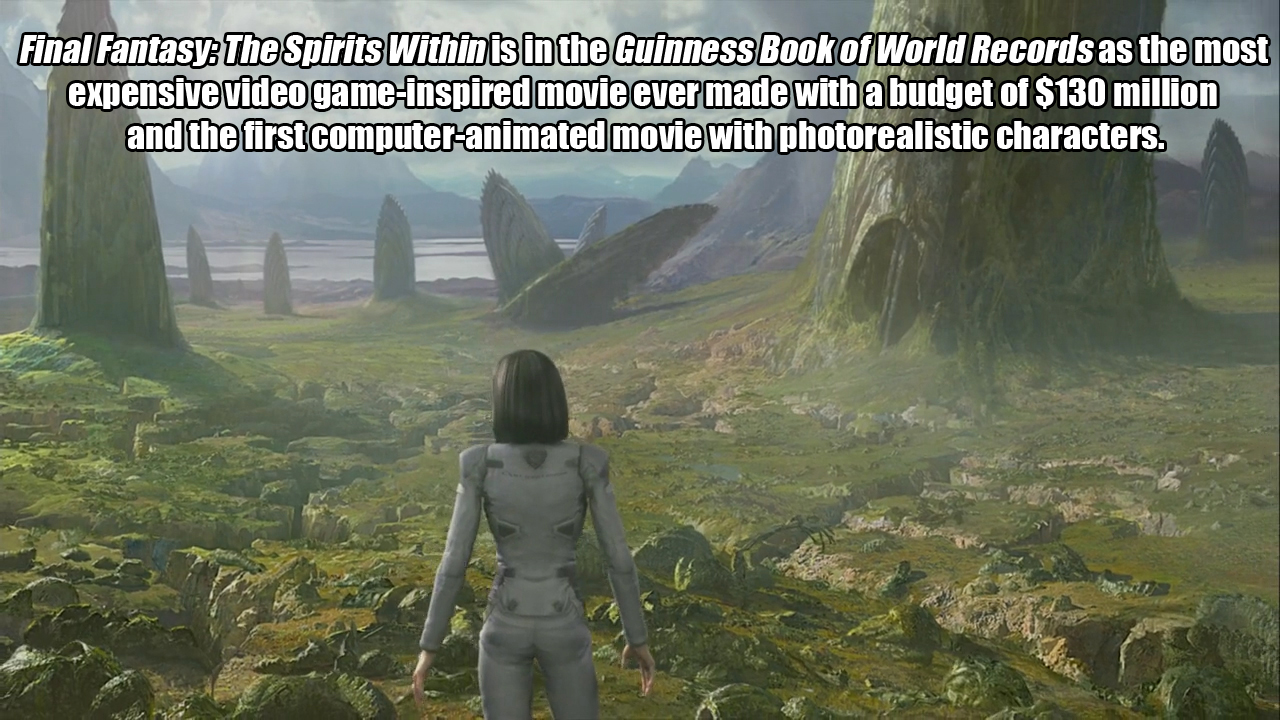
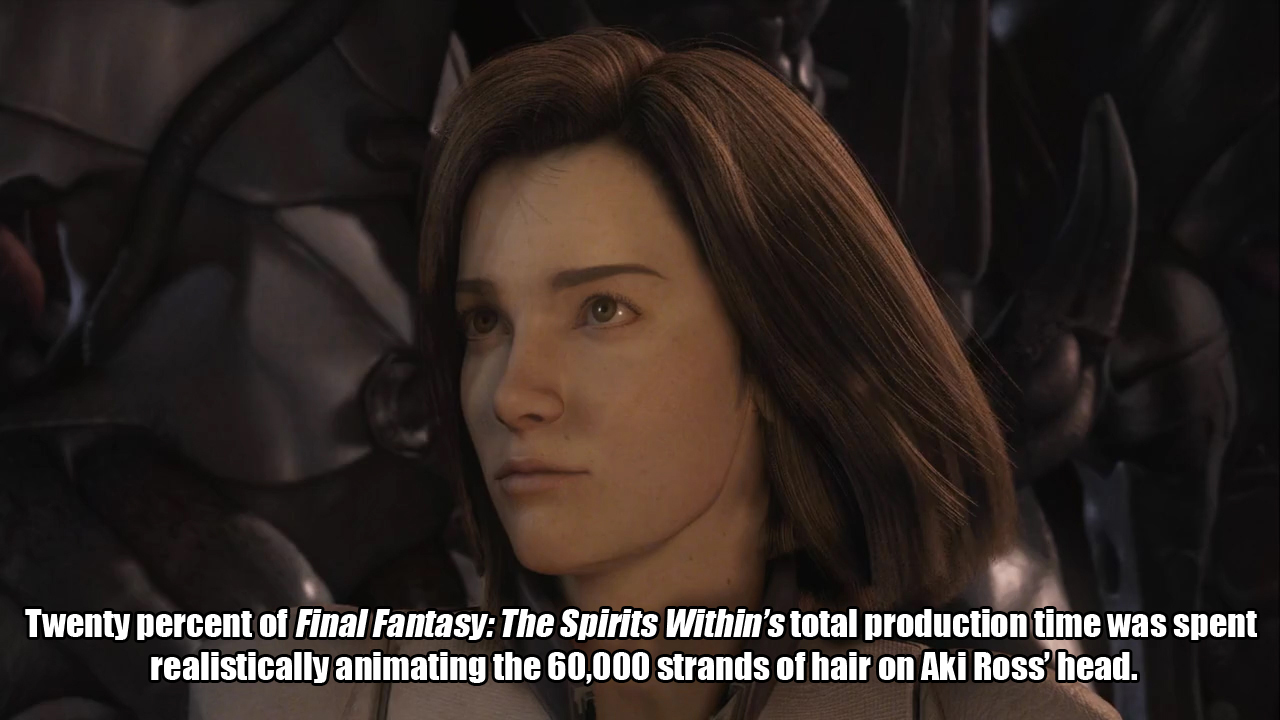
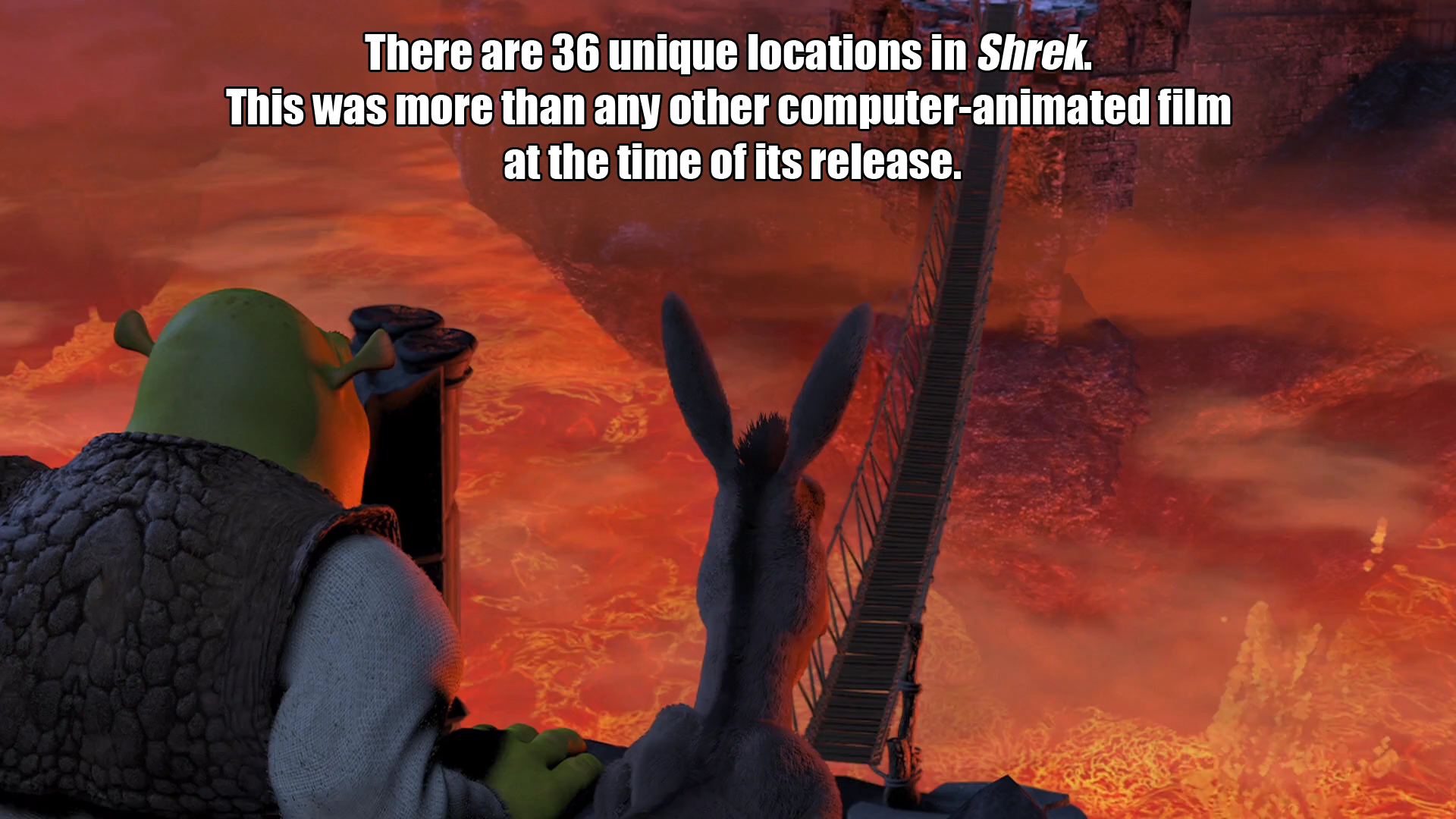
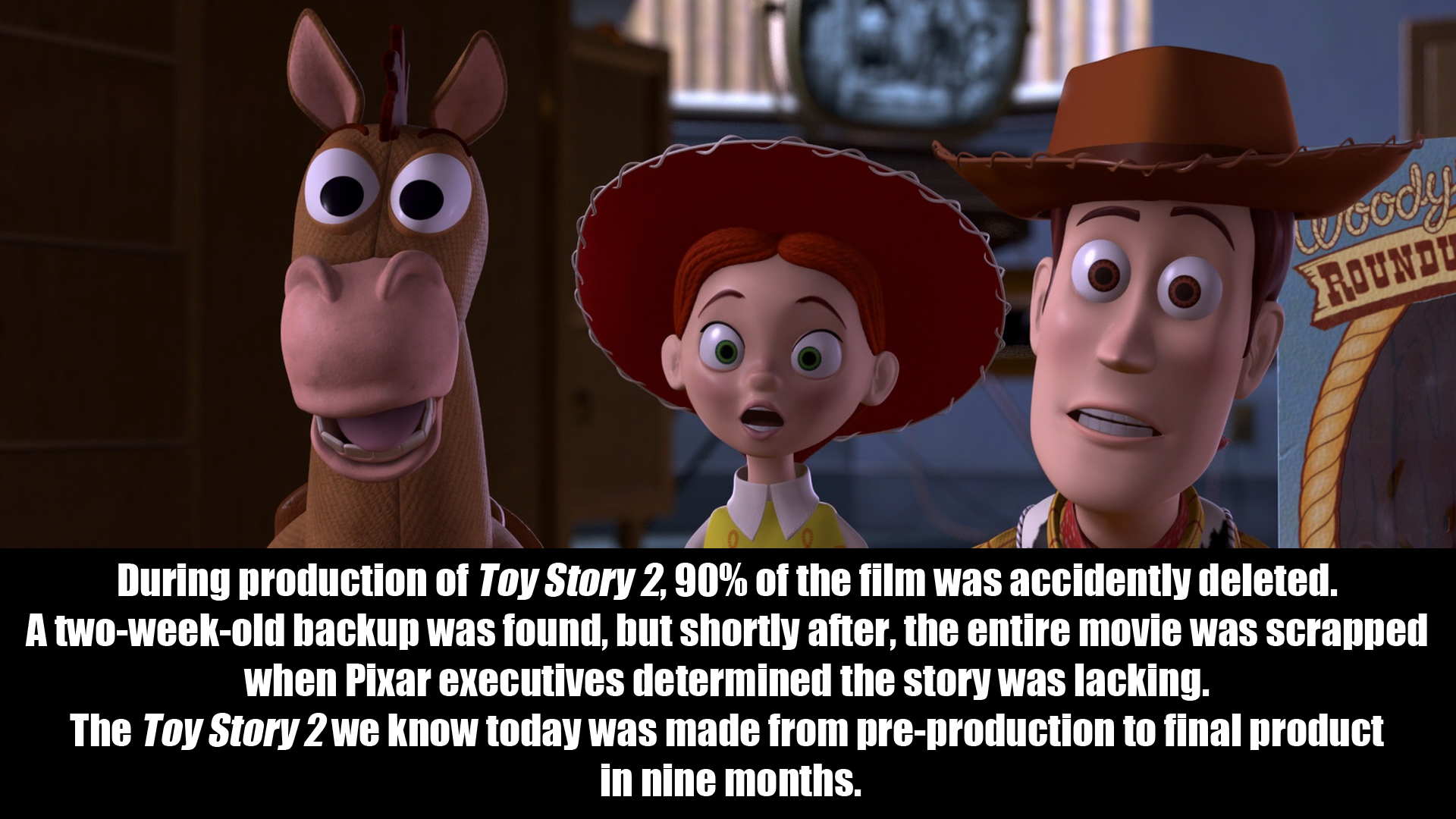
Retrieved from http://thenextweb.com

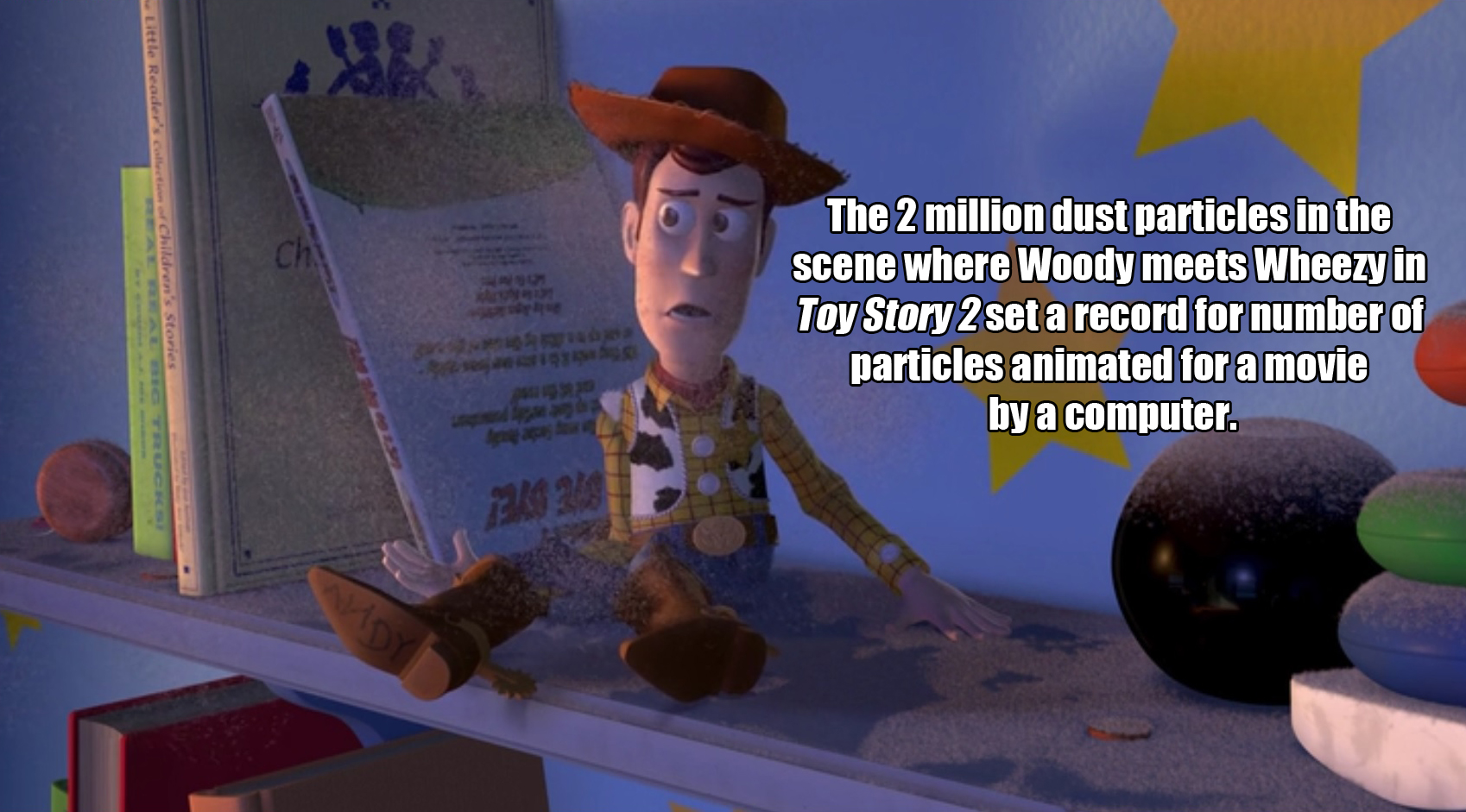
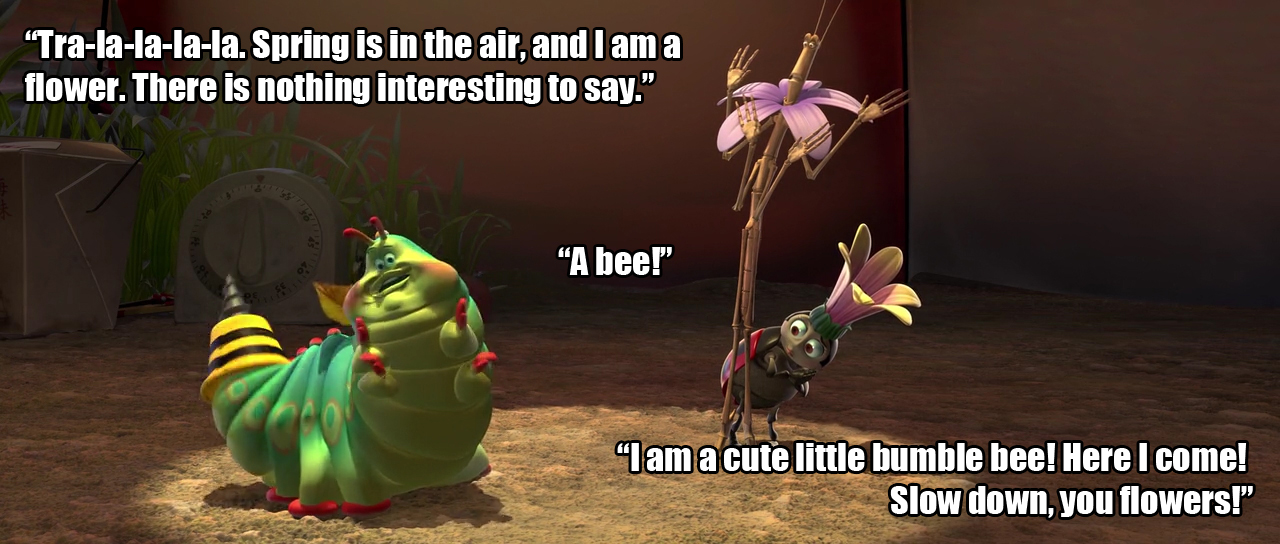
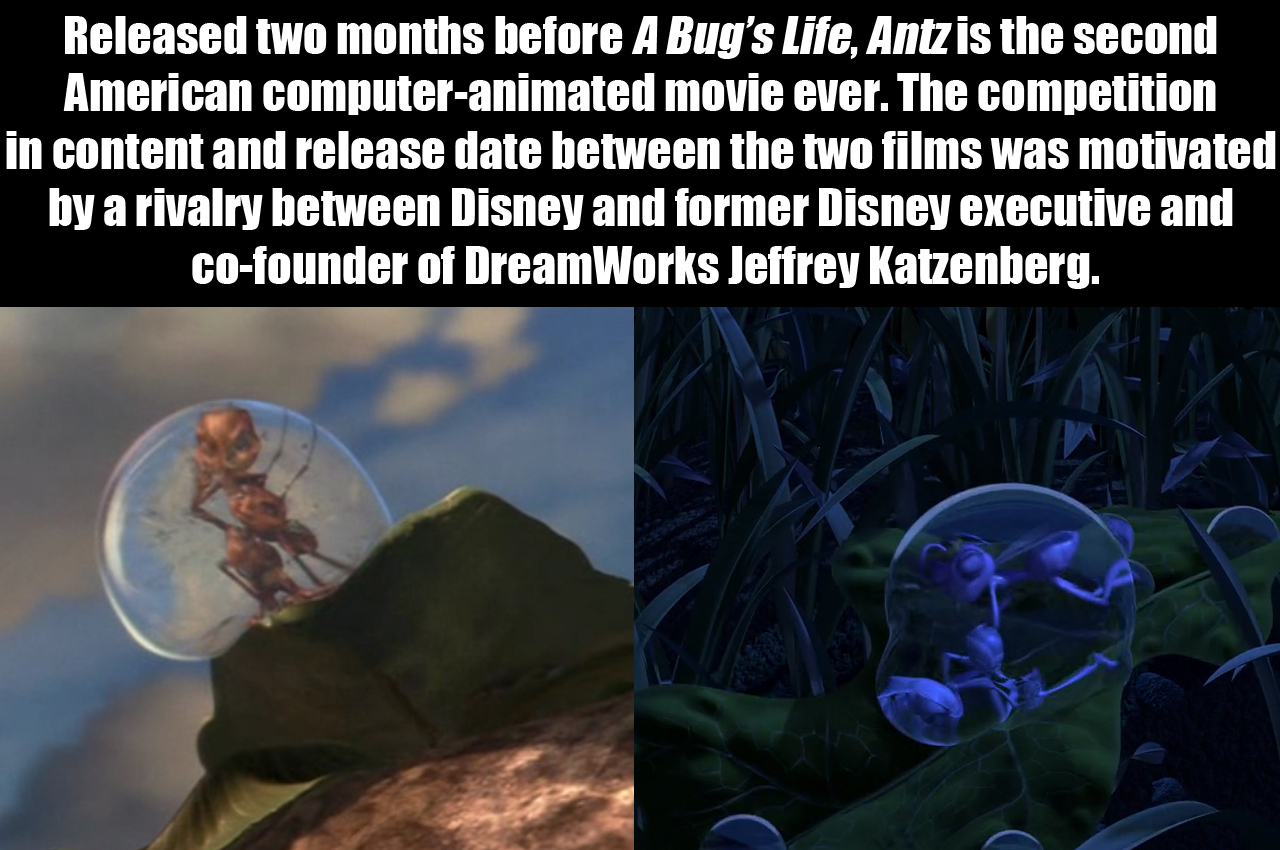
Retrieved from http://laprensa-sandiego.org
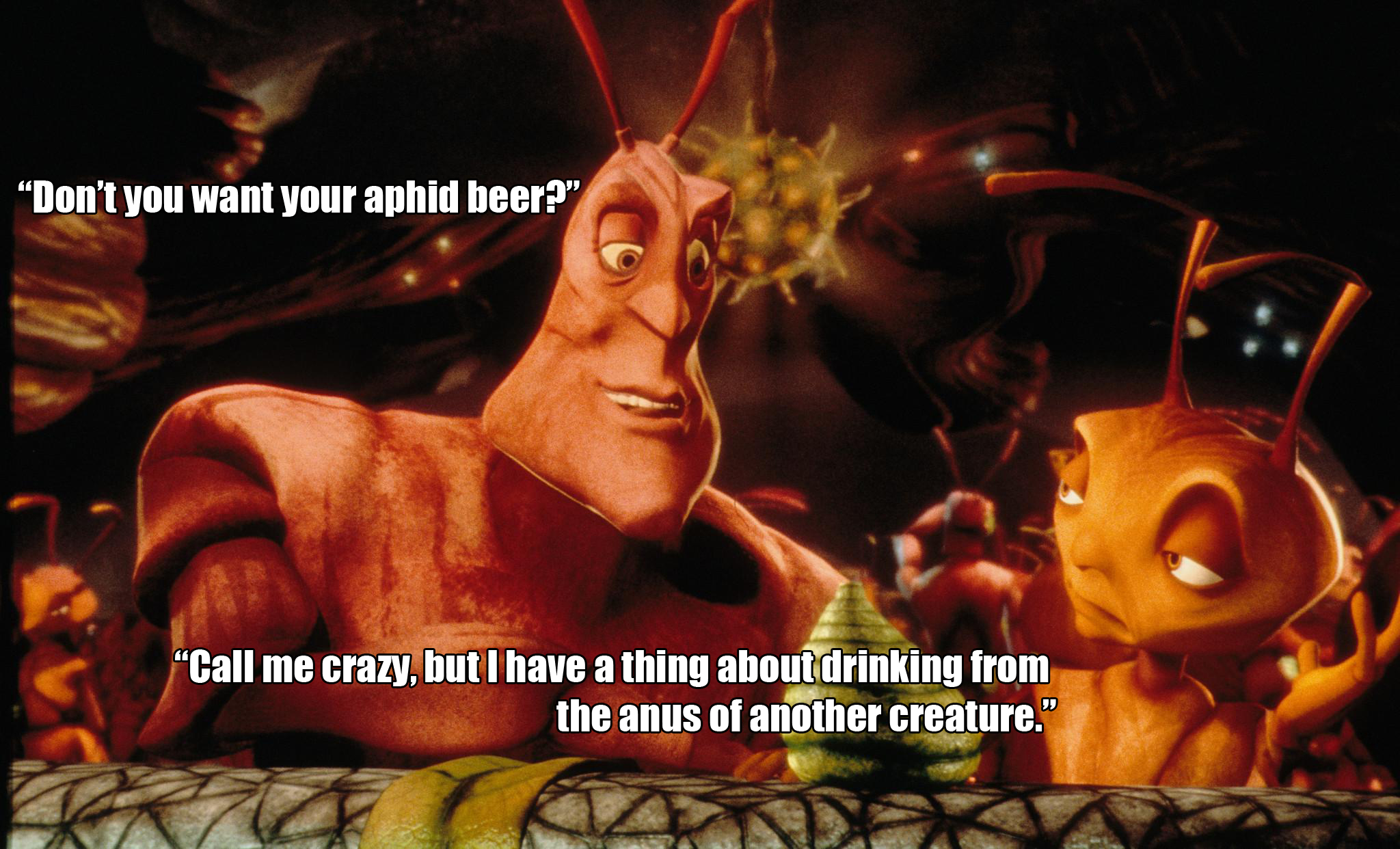

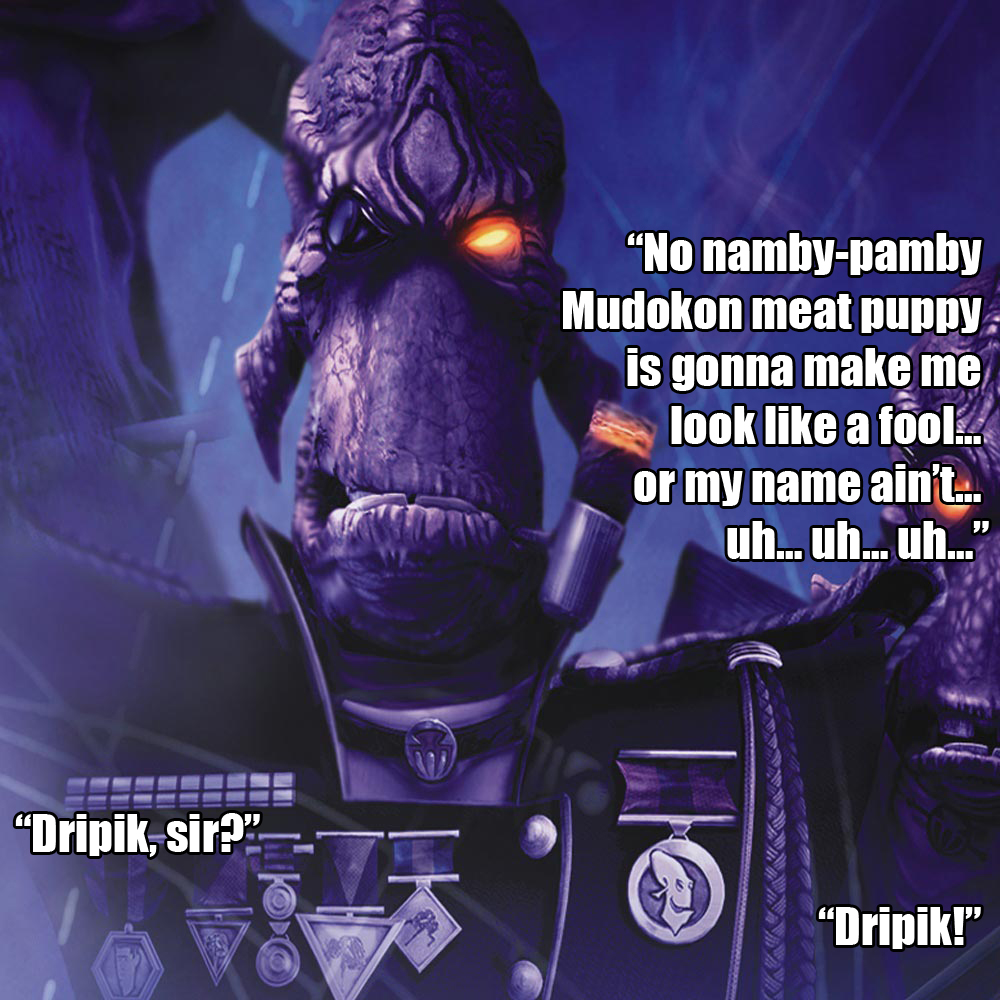
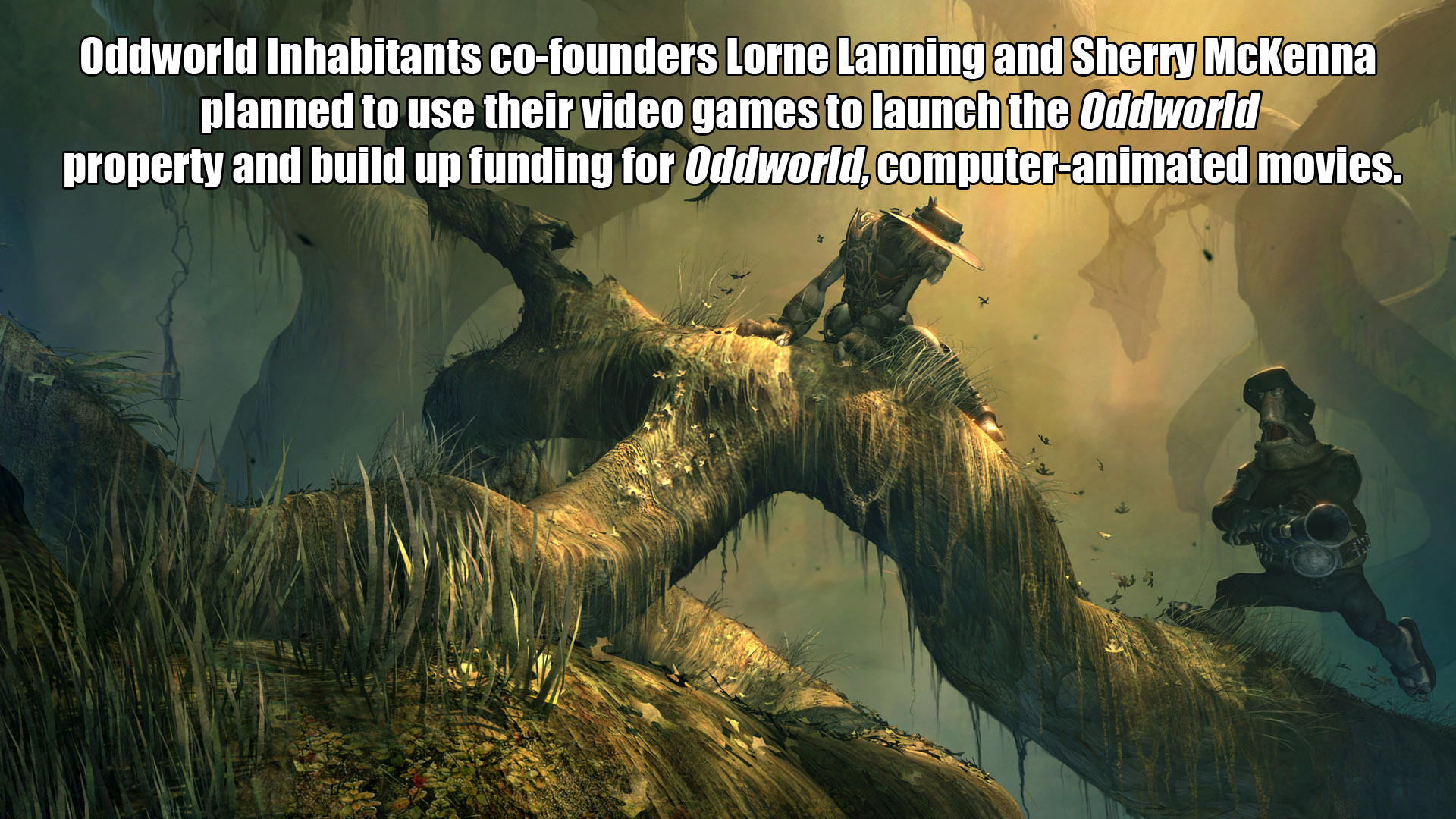
Retrieved from http://www.katzenjammerrecords.com
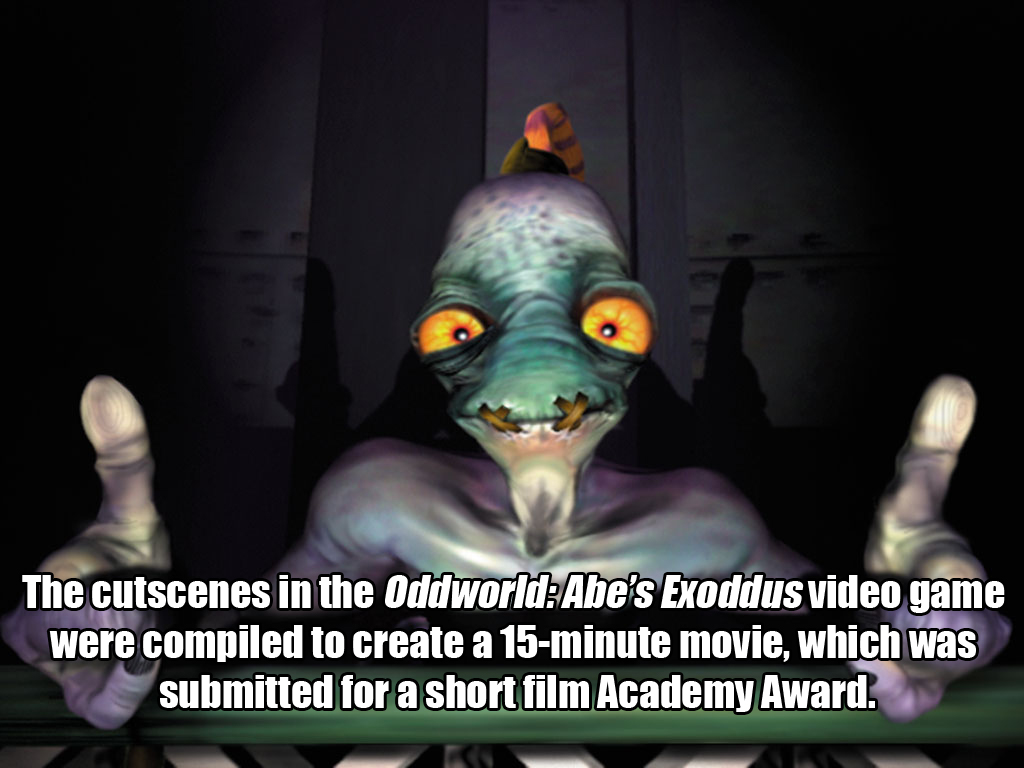
Retrieved from http://www.katzenjammerrecords.com
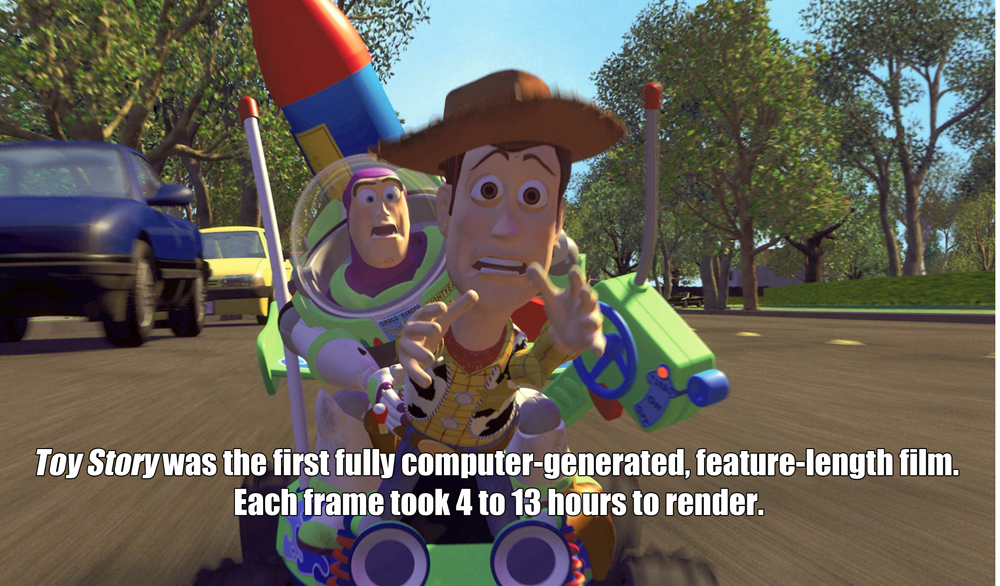

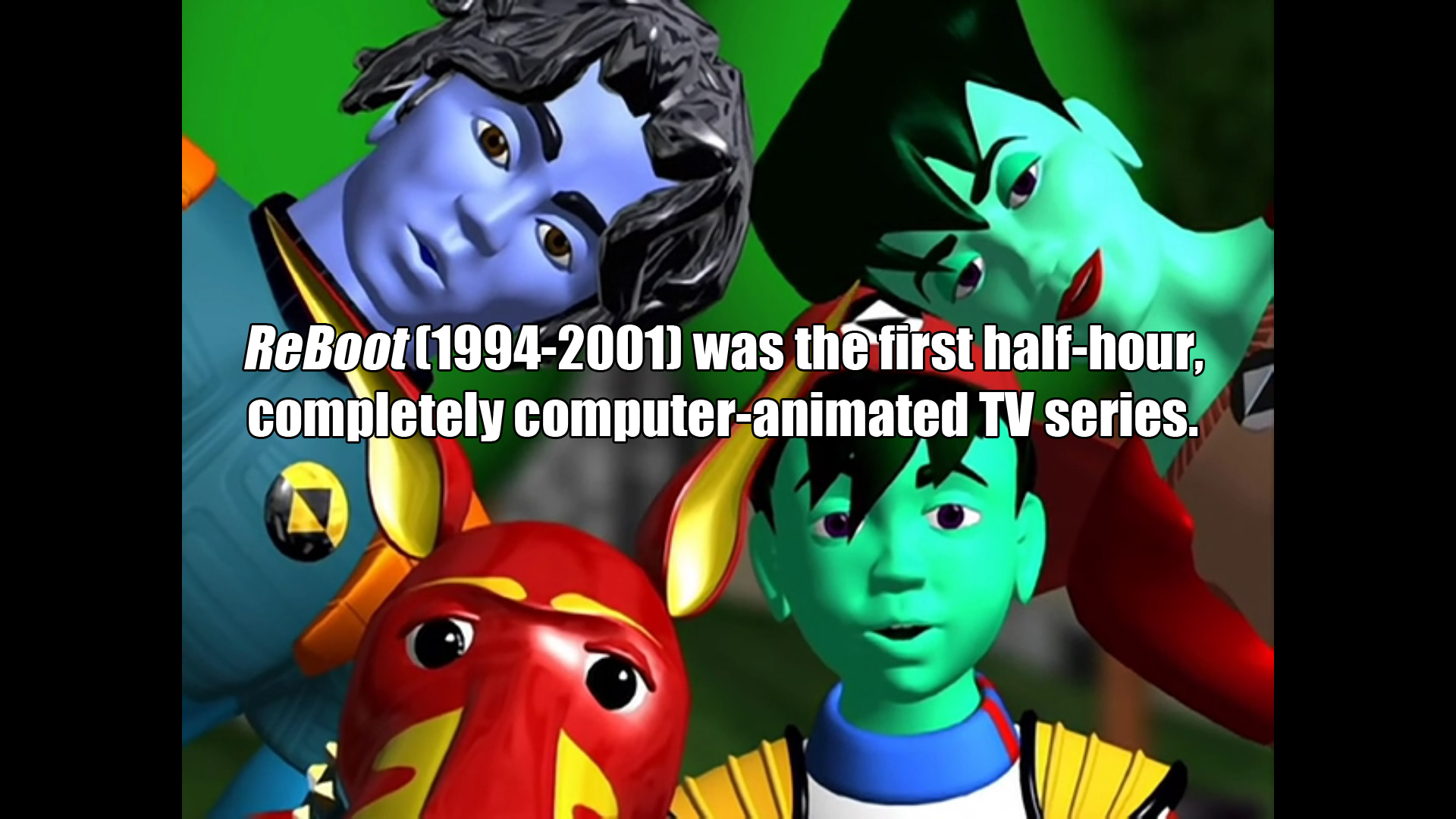
http://articles.latimes.com/1994-11-10/entertainment/ca-61086_1_computer-animation
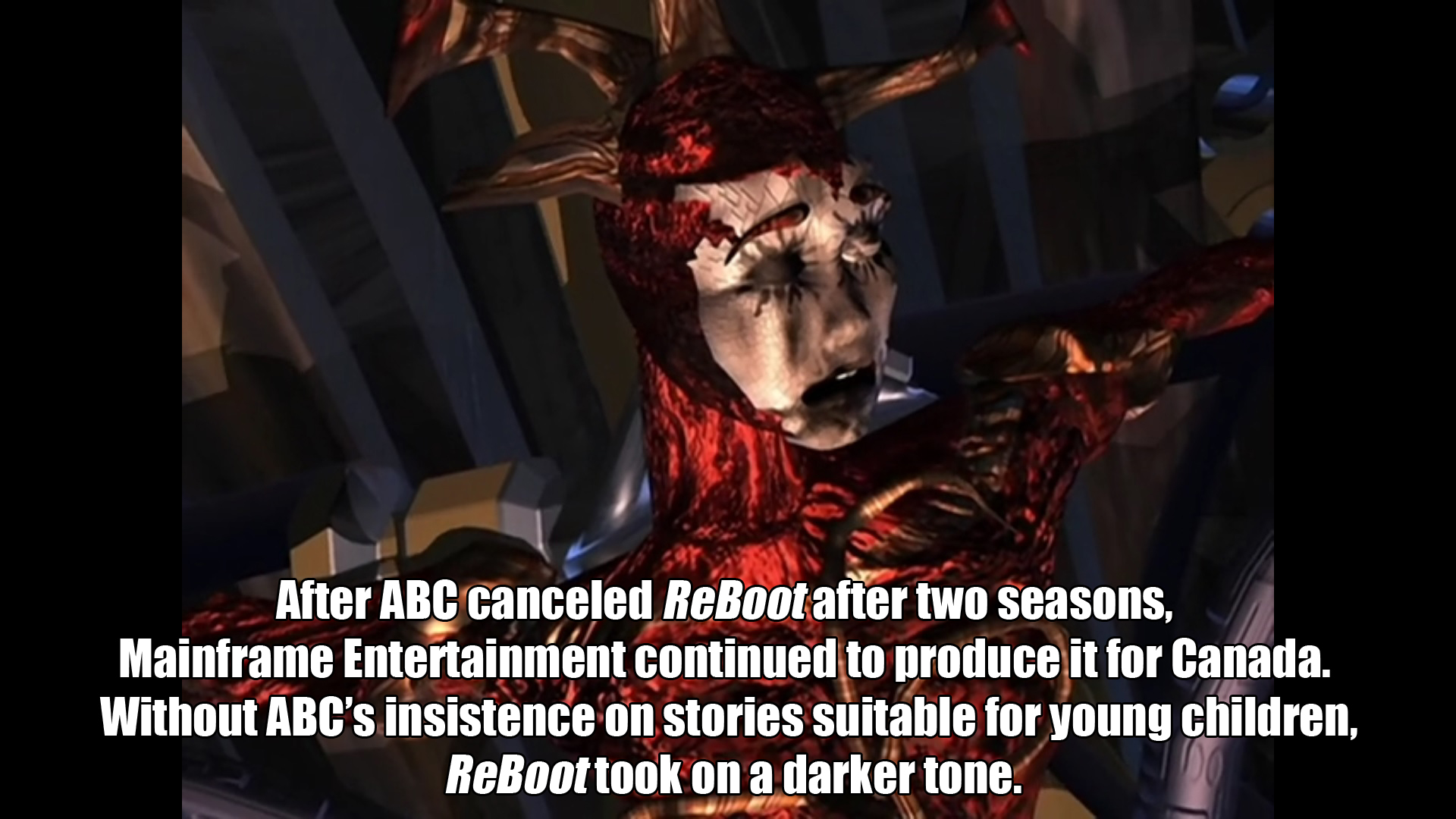

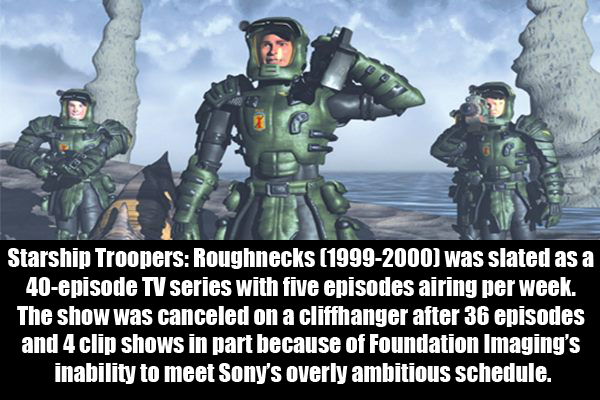
http://www.aintitcool.com/node/4421
Elysium (2003) was made in South Korea. (Source: IMDB)
Appleseed (2004), Appleseed: Ex Machina (2007), Tekken: Blood Vengeance (2011), Resident Evil: Degeneration (2008), and Resident Evil: Damnation (2012) were made by the Japanese company Digital Frontier. (Source: Digital Frontier Website)
Have some CG movie trivia you think would fit here? Leave a comment below or send an email. Include a source!
Final Fantasy VII: Advent Children Complete Review
Advent Children Complete has taught me that I either have extremely bad taste in movies… or Complete was so excessive that even I thought it was ridiculous. I’d have to watch it again to be sure. XD
Cuz, alright, I’ll believe that guys with superpowers can swing giant swords and jump really high and shit, but I can’t believe that a motorcycle can be catapulted THROUGH a helicopter immediately followed by a superhighway collapsing, destroying Midgar even more; the helicopter crashing in completely unrelated and ridiculous circumstances, nearly crushing everyone for the fiftieth time; and another helicopter magically appearing. (If that sentence made no sense, good. That’s my exact experience of this scene in the movie.) Sure, punching the highway while going 70 mph and then throwing your motorcycle with your feet is excessive, but at least then the excessiveness was kept between three characters with well-established flying/high jumping powers and super strength. The action wasn’t thrown between those three characters, a ridiculous comic relief battle in a helicopter, and mass destruction for no memorable reason.
I did appreciate the movie’s attempt to better explain and take more time with the original’s plot and characters. Who the fuck is Denzel and how was he dragged into Kadaj’s evil plans? How did ALL THE ORPHANS (and the whole city apparently) know to go to the church at the end of the movie? Why did we need to spend two minutes watching Cloud’s phone sink to the bottom of a lake? All of these details and more are revealed in this movie!
I don’t agree with all the choices made, but some of them I quite liked. First, I liked seeing Denzel’s backstory. In the original cut, the viewer simply accepts that Denzel is a new character, a sickly orphan that Cloud and Tifa are taking care of. It was nice seeing that there was backing to him. Second, in the original cut, we often see short sequences representing ideas and past events that only the most hardcore FFVII fan or the most studious viewer could take meaning from. Complete extends some of these cuts rather nicely into more coherent images. For example, Cloud’s brief flashback of Zack originally contained a couple shots of Zack encouraging Cloud to work hard as a SOLDIER followed by a very short image of Zack in a panic and yelling “Cloud, run!” Complete extends this to show Zack as Cloud’s mentor, his ultimate sacrifice, and the promise Cloud made to him. While it might leave the viewer with more questions as to who Zack is, it’s certainly less cryptic than Cloud referencing some promise he made to someone followed by a flashback ending with “Cloud, run!”
Overall though, all of these expanded details not only add nothing to the plot but also take away from what the movie does have in story and in action. Problems begin at the beginning. Like the original, Complete starts with the last scene of the game, an event that takes place 498 years in the future. This is followed by a title screen that states “498 years earlier” and a brand new scene. This emotionless, dialog-heavy scene features Rufus and someone else talking about what they’re about to do in the next scene. If that weren’t bad enough, it’s followed by a title screen that says “Two weeks earlier.” The audience is now aware that they have gone back exactly 498 years and two weeks and have no investment in any of the characters and can no longer take the movie seriously.
This tedious expansion on what the characters are doing and what they are about to do continues throughout the movie. Dialog scenes are extended. The scene between Rufus and Cloud, for example, goes into laborious detail about how much they didn’t find Sephiroth and how much they did find Kadaj and his minions in the crater. I actually liked this dialog scene in the original movie. It does perhaps take a couple viewings to pick up all the details, but the dialog is quite delightful and exact. The scene was written to be quick and precise. Cloud doesn’t want to be there, but Rufus wants him to stay, and Reno gets in both of their ways. Cloud talks over Rufus. Rufus talks over Cloud. Reno cuts in between both of them. Extending the dialog in this scene kills the relationships between all three characters and the humor that results from this language use.
New dialog scenes are added. Ever wanted to know who that girl, who drug Denzel to a shady-looking truck owned by effeminate men in black leather, is? She will tell you her life story! Want to know how all the orphans knew to go to the church at the end? You will see a scene filled with ringing cellphones followed by a crowd of people journeying to the Holy Grail—I mean the church. Just how horrible is geostigma? Horrible. What do any of these scenes have to do with the movie’s miniscule plot? Nothing!
Just because you detail the life-story of a random character doesn’t mean you add any depth to the story. In video games, it’s fine to go exploring, take a break from the main plot, find side quests, and learn about less important characters. In a movie, it completely destroys continuity and slows it way the hell down. This is a particularly serious problem considering that Advent Children is primarily a fast-paced action movie.
The continuity problems that seemingly random detail expansion creates were particularly noticeable in the scene of ringing cellphones. This scene takes place immediately after we see the building Cloud is on explode. We cut to a horrified Tifa yelling “Cloud!” We see Denzel and Marlene, holding hands and wondering if Cloud is alright… Then, we hear a phone ring. Tension destroyed. This ridiculous sound is followed by a sequence of shots featuring Denzel and everyone else in town answering their phones to a mysterious caller (assumedly Aeris) and then going on an epic journey to the church. Sure, no one knows Cloud exploded. They can answer their phones and go on an epic journey if they want to (except Tifa, who’s probably flipping her shit). The audience ultimately decides if they’re going to let this ridiculous display destroy their experience or not. Even then, there’s still a problem. If this is really how Aeris communicates with people as a ghost, then it’s probably better to keep it out of the movie because it’s ridiculous! Leave it to the audience’s imagination! I can think of a better explanation already like, I don’t know, Aeris speaks telepathically to Cloud throughout the entire movie. Why can’t she do that with all the… orphans? Wait. Why does this new scene feature townspeople? We only actually see orphans surrounding Cloud inside the church. Do we need to know what the adults of Midgar are doing as well? Do orphans have cell phones? So many questions!
New and expanded scenes that focus on the horrors of geostigma also add nothing to this seemingly crucial element of the plot. The original movie showed that people with geostigma had gray wounds on parts of their bodies. It also hinted that occasionally these wounds caused people to hallucinate, blackout, ooze blue goo, or even die. Advent Children Complete features multiple characters that are discriminated against for having geostigma, ooze black goo, suffer horribly, and die. Perhaps these graphic depictions of geostigma were to make Cloud seem more vulnerable and affected by the disease. Cloud is on such a different level from the defenseless, nameless characters scrabbling on the ground though that he seems as invincible as ever. The disease is more associated with the desire to atone for past sins or bring back figures from the past like Jenova and Sephiroth than it is with actual horrible disease. That is, it’s more as a symbol that the planet, its people, and Cloud haven’t healed from the events of the past, not as a literal disease that kills billions horribly.
As I hinted at before, there is also more action but not the good kind. New shots and scenes are oddly cut between shots and scenes from the original movie and are excessive to the point where even giant Final Fantasy VII: Advent Children nerds like me are offended. For another example, one new scene features Denzel fighting a summoned monster with a pipe and a fire hydrant (yup). Why do we need to know that Denzel is also helping Cloud and the others fight? Perhaps so his stupidity can lead to Cloud having to save him and Tifa by throwing his sword like a boomerang? Holy shit! What!? These scenes also ruin what little coherence the original action scenes have. It’s already difficult in the original to understand what exactly is happening. The action scenes in Complete add parallel fight scenes to fight scenes, making them even harder to follow and often more ridiculous.
Random spots of dirt, mud, and blood were added to clothing, skin, and shoes. The final fight scene was changed so that Cloud was stabbed ten times by Sephiroth and then hallucinated a little. Tifa still doesn’t get any boobs. I could go on and on, but I believe I’ve nerded out enough. Perhaps my love and near memorization of the original movie has affected my ability to accept any modifications to it. Perhaps if I continue to watch Final Fantasy VII: Advent Children Complete (and believe me I will!), it will grow on me and become my favorite CGI movie since the original… but probably not.
I knew Complete would probably be bloated with additions, but I expected to get at least some enjoyment out of the extended fight scenes and the prettiness of the new CGI. Perhaps it’s good that I didn’t enjoy it as I thought I would. Sure, longer dialog scenes give me more time to drool at the beautifully crafted animation, but the lifeless, bloated dialog and the series of ridiculous events really affected my experience. That says there may be something more to the original movie for me than pretty CGI and giant sword battles. The original movie had its moments of slowness, excessiveness, and mindlessness, but it didn’t try to be anything more than what it set out to be, an action movie for a very specific audience. Its dialog said what needed to be said and nothing more. Sometimes characters only spoke through looks or subtle movements. Its quick cuts showed the minimal amount of what needed to be shown, and it left everything else to its audience’s imagination. This minimalist storytelling may have been lost to its viewers because of its subtleties and because of its focus on getting to the next action scene, but it’s also what made the original story better than the complete one.
P.S. Cloud’s phone had to sink to the bottom of the lake, the same lake he dropped Aeris in, so that her ghost had a phone to call everyone and tell them to go to the church at the end of the movie. NOW THE WHOLE MOVIE MAKES SENSE! XD
How General Hein Destroyed Square Pictures Extra Life Blog
This is a post that I wrote for Extra Life’s blog on Final Fantasy: The Spirits Within.
http://blog.extra-life.org/2014/06/community-post-how-general-hein-destroyed-square-pictures.html
The Speech Therapy vlog version can be found here.
Speech Therapy: Sword Boomerang? How Do?
Transcript:
The first time I saw Final Fantasy VII: Advent Children Complete, there was one sequence in particular that I couldn’t get out of my head.
The more I thought about it, the more I wasn’t sure it had actually happened.
“Cloud couldn’t have thrown his sword. Yuffie must have thrown her boomerang!”
“Maybe he just rode his motorcycle by and mowed them all down.”
“Well, he can fold a couple of his swords. Maybe it was bent into the shape of a boomerang when he threw it.”
“Maybe he rode his motocycle so fast that he caught up to the swords!”
I had to watch this sequence five times before I could finally accept that it did happen. Then, I saw this. Cloud had thrown not one but two giant swords… like boomerangs… at the same time.
The result is a scene so ridiculous that I literally could not comprehend it. But wait. The original Advent Children was also full of physics defying action. I’m usually not a stickler for physics, so what’s the difference between this sequence and, say, Loz throwing his motorcycle with his feet?
Why could I accept that and not boomerang swords? So here’s my theory.
All the scenes leading up to Loz’s motorcycle toss prepare us for it. From the very first fight scene, we’re introduced to the high-speed, motorcycle chase sequences that we’ll see for the rest of the film.
We also see on several occasions the damage that Loz’s attacking arm can do, his super-human abilities, and the forces that he can withstand.
Finally, we have plenty of chances to see that gravity doesn’t work quite as we expect it to.
Combine these elements together, and you have a believable motorcycle toss.
Advent Children doesn’t remove all the physical limits that we’re used to though. For example, the film gives us no reason to believe that thrown swords will do anything but lodge themselves into whatever they’re thrown at. Further, we never see a character willingly throw their sword. The separation between fighter and sword during a fight is always shown as being a bad thing.
So, Cloud throwing his swords like boomerangs breaks the film’s loose but nonetheless existent physics and the world’s established rules of battle, creating a scene that comes off as random and completely ridiculous.
What I liked about the original Advent Children was that unlike most other full CGI action films, it never broke its established rules as soon as the opportunity arose. Granted, Advent Children created a world so action packed and boundless that near anything was believable, but it still had lines that it could not and didn’t cross. I wouldn’t believe that Cloud can throw his swords like boomerangs, that a child can defeat a monster with a fire hydrant, that a dead girl no one knows would call everyone in Midgar, or any of this for reasons that I’ve already explained.
Perhaps if this were a film about sword throwing children, who frequently receive phone calls from dead people they don’t know and destroy poorly designed super highways with an infinite number of helicopters, maybe I would believe it. Because Advent Children Complete only uses these elements randomly though… no.
Like I said, Complete isn’t the only CGI action film that has this problem of breaking its own rules for the sake of awesome action. It’s quite common actually… for reasons… but that’s a subject for another video. Talk at you next time!
Speech Therapy: Blood! Vengeance! Characters! (Round 2)
Transcript:
Last episode! Do Tekken: Blood Vengeance and Final Fantasy VII: Advent Children create fight scenes that also entertain non-fans of the games they’re based on? Specifically, do they create characters within the course of the film that non-fans can sympathize with or understand?
Now! Let’s take a look at the final fight scene in both movies. Both fight scenes are sort of like a final boss fight where the boss is a character that fans are familiar with but has only been mentioned briefly in the course of the movie. From the boss’s first appearance to his defeat, Advent Children Complete’s final fight lasts roughly 10 minutes, Advent Children’s lasts 6 minutes, and Tekken’s lasts about 25 minutes.
Do the movies succeed in setting up the characters and story so that non-fans are also engaged in the battle and entertained for the duration of these fights?
Tekken fairs very poorly… but for reasons completely unrelated to the introduction of a new character. As soon as this boss fight starts, the two girls we’ve spent the entire movie with cease to have any importance. This fight is between boss Heihachi Mishima, Kazuya Mishima leader of G Corporation, Jin Kazama leader of Mishima Zaibatsu, and Shin Kamiya.
The character that we know best is Shin Kamiya. As sort of the driving force of the movie, he’s carrier of the M gene, a genetic mutation that makes him immortal. Jin and Kazuya have been after him to gain immortality, which is how the three came together for this final fight. Unfortunately, whenever Jin and Kazuya meet, Jin’s grandfather and Kazuya’s father, Heihachi appears as well. This is all part of Shin’s plan though. He wants to kill Heihachi, the man behind the experiments performed on him to produce the M gene.
Shin’s not really someone we can sympathize with though. He’s developed no meaningful relationships with the main characters and shown himself only to be a pathetic, suicidal asshole. We need not worry too much about it though because, despite his immortality, he dies almost immediately, assumedly by being impaled on a few stray hairs.
This leaves us with two characters who combined have had less than five minutes of screen time. Jin is perhaps the most likely one we can sympathize with. He died as badly as he lived, but Shin’s death ignites Jin’s rage towards Kazuya and Heihachi. The Mishima family has killed an innocent in their family quarrel, and this isn’t the first time it’s happened. Jin wants to kill his father and grandfather to end the bloodshed. Heihachi and Kazuya simply want to kill the other two for no reason. Jin is also a friend of Shin and Xiaoyu, the protagonist. What sympathy we can have for Jin is forgotten though when he carelessly tosses Xiaoyu aside, and we’re reminded that he doesn’t care if he destroys the entire world in his quest to destroy his family.
Meanwhile, the main characters are on the sidelines trying desperately to assert their purpose in an ultimately meaningless fight. They seem to be trying to emphasize the horrors of violence, but because this battle is taking place in a castle in the middle of nowhere between near invincible characters that we don’t know or like, there’s nothing horrific about it. In fact, we’re hoping that all three of them kill each other as quickly as possible so that they stop breeding. Xioayu’s robot friend Alisa becomes a casualty, but her apparent death does nothing to stop the violence or improve Jin’s character. Xioayu is the only one in the audience or the movie who is stupid enough to believe or care that Alisa is dead. Jin put her in standby mode so that she wouldn’t get in the way of him murdering his family.
Advent Children does a better job at creating an entertaining fight scene that we care about without needing all the backstory that fans have. This time, we have the benefit of being with Cloud, a character that we’ve gotten to know pretty well in the course of the movie. By this point, Cloud has realized what an ass he’s been to his friends, and he’s tried to make up for that. He’s defeated horrible monsters that have destroyed the city, slaughtered innocent civilians, and attacked his friends. He’s also fought Kadaj, who is responsible for kidnapping and enslaving children, destroying the city, killing people, and possibly infecting innocents with a horrible illness. Overall, Cloud is someone we can root for.
The moments leading up to the fight do a great job at getting rid of any doubts we have about how bad it would be if Sephiroth were resurrected. As soon as Cloud realizes that Kadaj knows how to recreate Sephiroth, his cocky attitude changes to panic. We recognize Sephiroth from the film’s introduction when he appears, and Cloud shows us how we should feel about this. Panic is something we’ve never seen from Cloud before, and he’s fought a giant monster, hordes of beasts, and three guys who are nearly as strong as he is.
We’ve seen: “Ah crap. I dropped my sword.”
“That guy! I should stop hallucinating!”
“Damn kids!”
And “What the hell?”
But never “Oh shit!”
Sephiroth’s danger both to the world and to Cloud is further enforced when we see what he can do. We’ve spent the movie with characters that can defy gravity and destroy structures with a single punch or sword swing, but Sephiroth still manages to place himself on an entirely different level. Compared to Sephiroth, Cloud and the others are really only high jumping. They need to launch themselves off something, like the ground or the power of friendship, and eventually, they fall. Sephiroth can outright fly. He can also destroy structures without touching them and manipulate the weather without Materia.
[Gifts from mother?]
Yeah, whatever.
These elements introduce the possibility that Cloud might fail. He may even be killed. We’ve grown to like Cloud and the destruction of the world and its inhabitants is never a good thing, so even if we’ve never played Final Fantasy VII and could care less that Cloud is fighting Sephiroth in a glorious CGI movie, we still have enough reasons to engage in the fight and root for the hero.
At the end of the day, Tekken: Blood Vengeance and Final Fantasy VII: Advent Children are fan service films, and there’s bound to be some things that outsiders won’t understand or appreciate. That’s what makes fan service films great! Unlike most movies out there, fan service films target a very specific audience, which can produce unique, awesome films. Some fan service films like Blood Vengeance target their fans only. I’m sure Tekken fans are much more appreciative of the glorious battle between Heihachi, Jin, and Kazuya than I am… at least I hope they are. Other fan films like Advent Children are accessible enough to attract new fans to a great game and give a nod and wink to old fans. Either way, these films give someone out there something that they’ve always wanted to see.
Talk at you next time!
